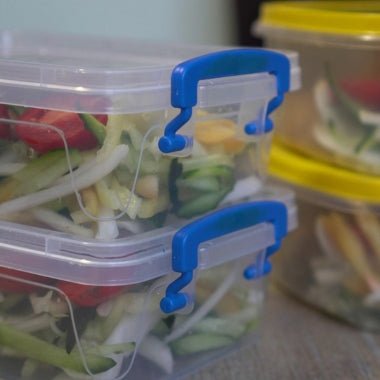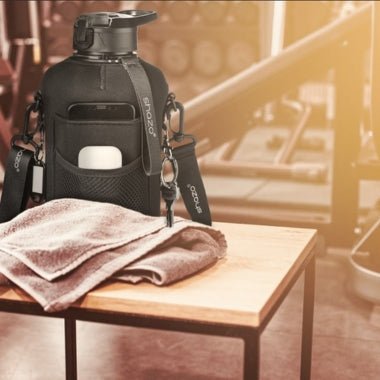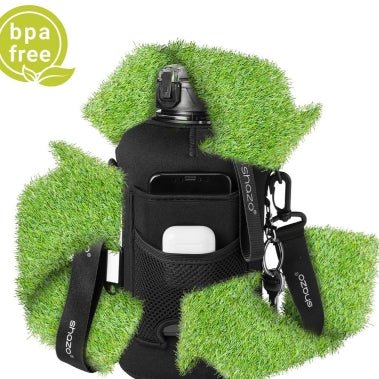HOW MANY OZ IN A GALLON - A COMPLETE GUIDE
Ah, you have hit us with another classic liquid measurement conundrum: how many oz in a gallon? Well, buckle up, because we are about to unravel a gallon oz mystery together and see how oz in a gallon fits.
We often worry about our water intake but fail to understand the stats behind the calculation of daily in-take in the units of liquid measurement. Today, let us focus on reading about oz to gallon, the intriguing world of liquid measurements and tackle a question that often leaves us scratching our heads: how many oz are in a gallon? So, grab your favorite beverage, settle in, and let us start understating about it together!
All right, so picture this: you are whipping up your favorite recipe, and it calls for a gallon of water. Nevertheless, wait, exactly how many oz are in a gallon or in other words how ounces in a gallon fit? Well, fear not, because we are here to break it down for you.
Where is the term gallon used?
Now, a gallon is a substantial unit of measurement, commonly used in the USA for all sorts of liquids. It is like the big brother of the measurement world, you know. However, when it comes to ounces, it is a whole different ball game.
Now, let us tackle the question that prompted our exploration: how many oz of water in a gallon? Simple rule, one gallon contains 128 fluid ounces. Therefore, if you are looking to measure out water in gallons, simply multiply the number of gallons by 128 to find the equivalent number of ounces. This knowledge can be particularly handy when you need to ensure you are meeting your daily hydration goals or when preparing large batches of beverages.
Learning more about how many fl oz in a gallon
So, here is the scoop if you want to taste how many fl oz in a gallon: one gallon contains a whopping 128 fluid ounces! That is right, 128. It might sound like a lot, but trust us, having this conversion in your back pocket will make your life a whole lot easier, especially when you are cooking up a storm or staying hydrated like a champion.
Think about it: the next time you are at the supermarket eyeing that gallon-sized jug of milk or orange juice, you will know exactly how many fl oz in a gallon you are getting. It is like having your own personal liquid measurement cheat code!
How many oz of water in a gallon and some other quick and easy calculations
To further simplify, let us break down the ounces in a gallon of water and their corresponding sizes:
- 128 ounces equal 1 gallon.
- In a container holding 2.5 gallons: That's approximately 19 bottles (2.5 gallons * 128 oz/gallon ÷ 16.9 oz/bottle = 18.93 bottles).
- For a 3-gallon container: That's roughly 23 bottles (3 gallons * 128 oz/gallon ÷ 16.9 oz/bottle = 22.71 bottles).
- And in a 5-gallon container: You would get around 38 bottles (5 gallons * 128 oz/gallon ÷ 16.9 oz/bottle = 37.83 bottles).
Difference between Gallons and Ounces and knowing more about how many oz in gallon?
Ah, the difference between a gallon and an ounce—the classic tale of David and Goliath in the world of liquid measurements! Let us unpack this intriguing dichotomy.
So, first things first: a gallon and an ounce are both units of volume measurement, but they could not be more different in terms of scale. Think of a gallon as the big guy on the block, while an ounce is more like its pint-sized sidekick.
A gallon is a whopping unit of measurement, commonly used in the United States for large quantities of liquids like water, milk, or gasoline. It is like the heavyweight champion of liquid measurements, capable of holding a staggering amount of fluid. In fact, one gallon is equivalent to a staggering 128 fluid ounces! That is enough liquid to fill up a small bathtub—or at least keep you well-hydrated for quite some time.
On the other hand, an ounce is the little guy, the underdog, the tiny titan of liquid measurements. While a gallon might be used for big tasks like filling up your car's gas tank or brewing a massive batch of homemade lemonade for a summer barbecue, an ounce is more suited to smaller, precise measurements. It is like the secret weapon in your kitchen related arsenal, perfect for adding just the right amount of flavor to your favorite recipes or ensuring you are getting the correct dosage of medication.

Fun Fact About The Word Gallon
Here is a fun fact about gallons and ounces: Did you know that the term "gallon" has historical roots dating back to medieval England? Back then, the gallon was used as a standard unit of measurement for wine and ale. However, there were different types of gallons, such as the wine gallon and the ale gallon, which varied in size. It was not until the 17th century that the British Parliament established the "imperial gallon" as a standardized unit of measurement. As for ounces, the term is derived from the Latin word "uncia," which means one-twelfth, reflecting its historical connection to the Roman system of measurement. So, the next time you are measuring out ingredients for a recipe or filling up your car's gas tank, remember that gallons and ounces have a rich and fascinating history that spans centuries!
How many oz in a half gallon?
But wait, there is more. If you ever find yourself in need of just a half-gallon, fear not! To answer this query, how many oz in half a gallon, simply half that number, and you have got yourself 64 fluid ounces. It is like the perfect balance between not too much and not too little, just right for whatever liquid adventures await you. So here you got your simple answer to big questions how many oz in half a gallon and how many oz make a gallon?
Where is the measurement of Gallons usually used?
The measurement of gallons finds its primary usage in the United States, where it's a standard unit of volume measurement for various liquids. From everyday activities like cooking and baking to industrial applications such as fuel storage and distribution, gallons are ubiquitous in American society.
In the culinary world, recipes often call for ingredients to be measured in gallons, especially when cooking in large quantities or preparing beverages for a crowd. For example, when making soups, stews, or stocks in commercial kitchens, chefs frequently rely on gallons to ensure accurate proportions and consistent results.
In addition to cooking, gallons are commonly used in agriculture for irrigation purposes and in the beverage industry for bottling and distribution. Furthermore, gallons play a significant role in the transportation sector, particularly in measuring and selling fuels like gasoline and diesel.
Overall, the measurement of gallons is deeply ingrained in various aspects of American life, from the kitchen to the gas station. Its versatility and practicality make it an indispensable unit of volume measurement in countless everyday activities and industries.
How many 32 oz in a gallon - The hidden world
There's a hidden world within the world of measurements, and sometimes even basic conversions can trip us up. Have you ever wondered how many 32 oz in a gallon you would need or how many 20 oz are in a gallon? Understanding the relationship between ounces and gallons can be surprisingly useful in the kitchen, garden, or anywhere where precise measurements are needed. To give you a more precise clarification, note below:
1. How many 64 oz in a gallon?
There are not exactly 64 ounces in a gallon. A gallon is actually equal to 128 fluid ounces. So, two 64-ounce containers would be needed to equal one gallon.
2. How many oz in a 1 gallon?
There are 128 ounces in 1 gallon.
3. How many oz in a 2 gallon?
There are 256 ounces in 2 gallons.
We can find this out by knowing that there are 128 ounces in 1 gallon. Since you have 2 gallons, you can multiply the number of ounces per gallon by the number of gallons:
128 ounces/gallon * 2 gallons = 256 ounces
4. How many 16 oz in a gallon?
There are 8 16-ounce containers in a gallon.
To find this out, we can divide the total number of ounces in a gallon (128 ounces) by the size of the container in ounces (16 ounces):
128 ounces / 16 ounces/container = 8 containers
5. How many oz in a 1/2 gallon?
To find out how many ounces are in 1.5 gallons, we can multiply the number of gallons by the number of ounces per gallon.
Since there are 128 ounces in one gallon, we can perform the following calculation:
1.5 gallons * 128 ounces/gallon = total ounces
This will give you the total number of ounces in 1.5 gallons.
6. How many 16.9 oz in a gallon?
There aren't exactly a whole number of 16.9-ounce containers in a gallon. This is because 128 (ounces in a gallon) is not perfectly divisible by 16.9 (ounces per container).
However, we can estimate how many 16.9-ounce containers you'd get in a gallon by dividing:
128 ounces / 16.9 ounces/container ≈ 7.57 containers
This means you would get approximately 7.57, or close to eight, 16.9-ounce containers in a gallon. It is important to note this is an estimate due to the non-even division.
7. How many 40 oz in a gallon?
We can find this out by dividing the total number of ounces in a gallon (128 ounces) by the size of the container in ounces (40 ounces):
128 ounces / 40 ounces/container = 3.2 containers
8. How many 8 oz cups in a gallon?
This is a common conversion in the kitchen and for tracking water intake. One gallon equals 128 fluid ounces, and since there are 8 ounces in a cup, we can perform the following calculation:
1 gallon (128 ounces/gallon) / 8 ounces/cup = 16 cups
9. How many 12 oz in a gallon?
We can't get a whole number of 12-ounce containers because 128 (ounces in a gallon) isn't divisible by 12 (ounces per container). However, we can find out how many containers we'd get by dividing the total ounces in a gallon by the size of the container in ounces:
128 ounces / 12 ounces/container = 10.67 containers
Conclusion
Alright, folks, there you have it: the lowdown on gallons and ounces. To reiterate, one gallon is equivalent to 128 fluid ounces. This fundamental conversion serves as the cornerstone for numerous applications, whether you are measuring liquids for cooking, mixing drinks, or conducting scientific experiments. By mastering this conversion, you gain a valuable skill that can streamline your daily tasks and enhance your efficiency in various endeavors.
We hope you found this little exploration both fun and informative. Now, go forth and conquer those liquid measurements like the measurement master.
In conclusion, understanding the relationship between gallons and ounces unlocks a world of possibilities in fluid measurements. Whether you are a culinary enthusiast, a fitness aficionado, or a DIY lover, knowing how many ounces are in a gallon empowers you to confidently tackle any task that involves liquids. So, the next time you reach for a measuring cup or a water bottle, remember the simple yet profound conversion that bridges the gap between these two units of measurement.



